Madagascar Flag Meaning
A white vertical stripe on the hoist side with two horizontal stripes of red and green on the fly side, representing the diverse heritage of the Malagasy people and the unique natural environment of the world's fourth-largest island.
- Continent
- Africa
- Adopted
- 1958
- Ratio
- 2:3
- Colors
- white, red, green
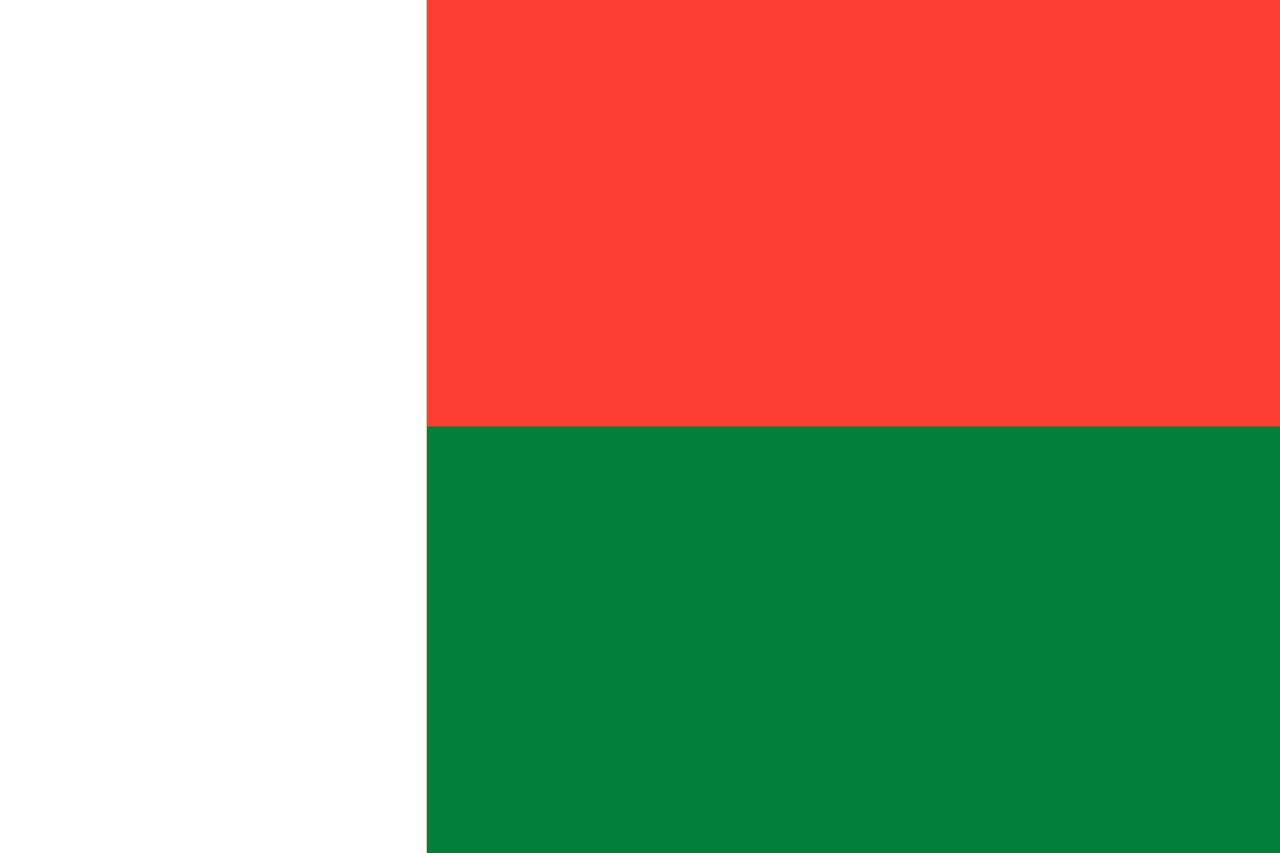
Symbolism
White Stripe: Represents the purity and integrity of the Malagasy people, as well as peace and unity among the diverse ethnic groups that make up Madagascar's population.
Red Stripe: Symbolizes the sovereignty and independence of Madagascar, representing the blood shed by ancestors in defense of the homeland and the strength of the Malagasy nation.
Green Stripe: Represents the rich vegetation and unique biodiversity of Madagascar, including its endemic flora and fauna, as well as hope for the country's agricultural and environmental future.
Traditional Heritage: The red and white colors reflect the traditional colors of the Merina kingdom and other Malagasy kingdoms, connecting modern Madagascar to its pre-colonial royal heritage.
Asian-African Synthesis: The color combination represents the unique blend of African and Asian influences in Malagasy culture, reflecting the island's position in the Indian Ocean and its diverse cultural heritage.
History
- 16th-19th Century: Various Malagasy kingdoms, particularly the Merina kingdom, used red and white as royal colors in their banners and traditional symbols, establishing the basis for the future national flag.
- 1896-1960: Madagascar became a French colony, using French colonial flags while traditional Malagasy symbols and colors persisted in local cultural practices and royal ceremonies.
- 1958: As Madagascar prepared for independence within the French Community, the current flag design was adopted, incorporating traditional Malagasy colors with green representing the island's unique environment.
- June 26, 1960: Madagascar gained full independence from France under President Philibert Tsiranana, and the flag became the symbol of the sovereign Malagasy Republic.
- 1975-1992: During the socialist Democratic Republic of Madagascar period, the flag remained unchanged despite major political and economic reforms, representing continuity of national identity.
- 1992: Madagascar adopted a new constitution establishing the Third Republic, but retained the same flag, showing its acceptance across different political systems and generations.
- 1958-Present: The flag has remained unchanged for over 65 years, representing one of the most stable national symbols in Africa despite periods of political instability and economic challenges.
Trivia
- Madagascar is the world's fourth-largest island and has been isolated from Africa for 160 million years, leading to unique evolution represented by the green stripe's biodiversity symbolism.
- The flag represents a country where over 90% of species are endemic, including all lemur species, making it one of the world's most important biodiversity hotspots.
- Madagascar's flag features colors that reflect the island's position in the Indian Ocean, with cultural influences from Africa, Asia, and the Arab world represented in the design.
- The Malagasy language belongs to the Malayo-Polynesian family, making Madagascar unique in Africa for having an Asian-origin language, reflected in the flag's cultural synthesis.
- The flag appears on Malagasy ariary banknotes alongside images of endemic wildlife like lemurs and fossas, connecting national identity to the island's unique fauna.
- Madagascar is home to six baobab species (of eight worldwide), and these iconic trees have become symbols of the country alongside the flag colors.
- The flag represents a country that was never fully colonized until 1896, maintaining independent kingdoms for centuries longer than most African territories.
- Rice cultivation, represented by the agricultural symbolism of the green stripe, is central to Malagasy culture and cuisine, with terraced rice fields covering much of the highlands.
- The flag flies over the Avenue of the Baobabs, one of Madagascar's most photographed locations and a symbol of the country's natural heritage.
- Madagascar's flag appears at Indian Ocean Commission meetings, where the island plays an important role in regional cooperation with Mauritius, Seychelles, and Comoros.
- The flag represents a country where zebu cattle are sacred to many Malagasy people, with traditional ceremonies and cultural practices centered around these animals.
- Cyclones frequently affect Madagascar, and the flag often appears in international disaster relief efforts, representing resilience in the face of natural challenges.
- The flag appears during Famadihana ceremonies, where Malagasy people exhume ancestors' remains and rewrap them in fresh silk shrouds, reflecting unique cultural traditions.
- Madagascar's vanilla production (the world's largest) and other spice exports often feature flag imagery in international marketing, promoting Malagasy agricultural products.
- The flag represents a country with significant mineral wealth including nickel, cobalt, and gemstones, making natural resource management a key national challenge.
Related Countries
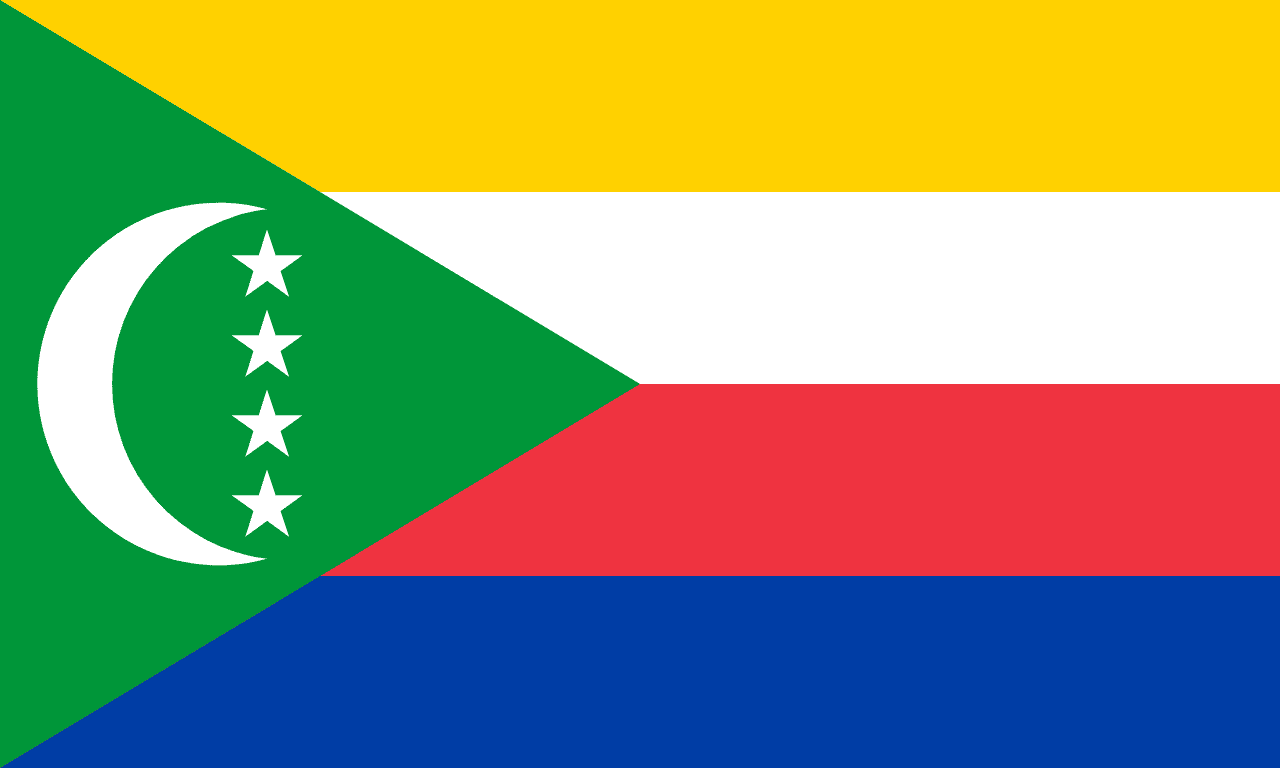
Comoros
Africa
Four horizontal stripes of yellow, white, red, and blue with a green triangle at the hoist containing a white crescent and four white stars, representing the four islands, Islamic faith, and the pan-African heritage of this Indian Ocean archipelago.
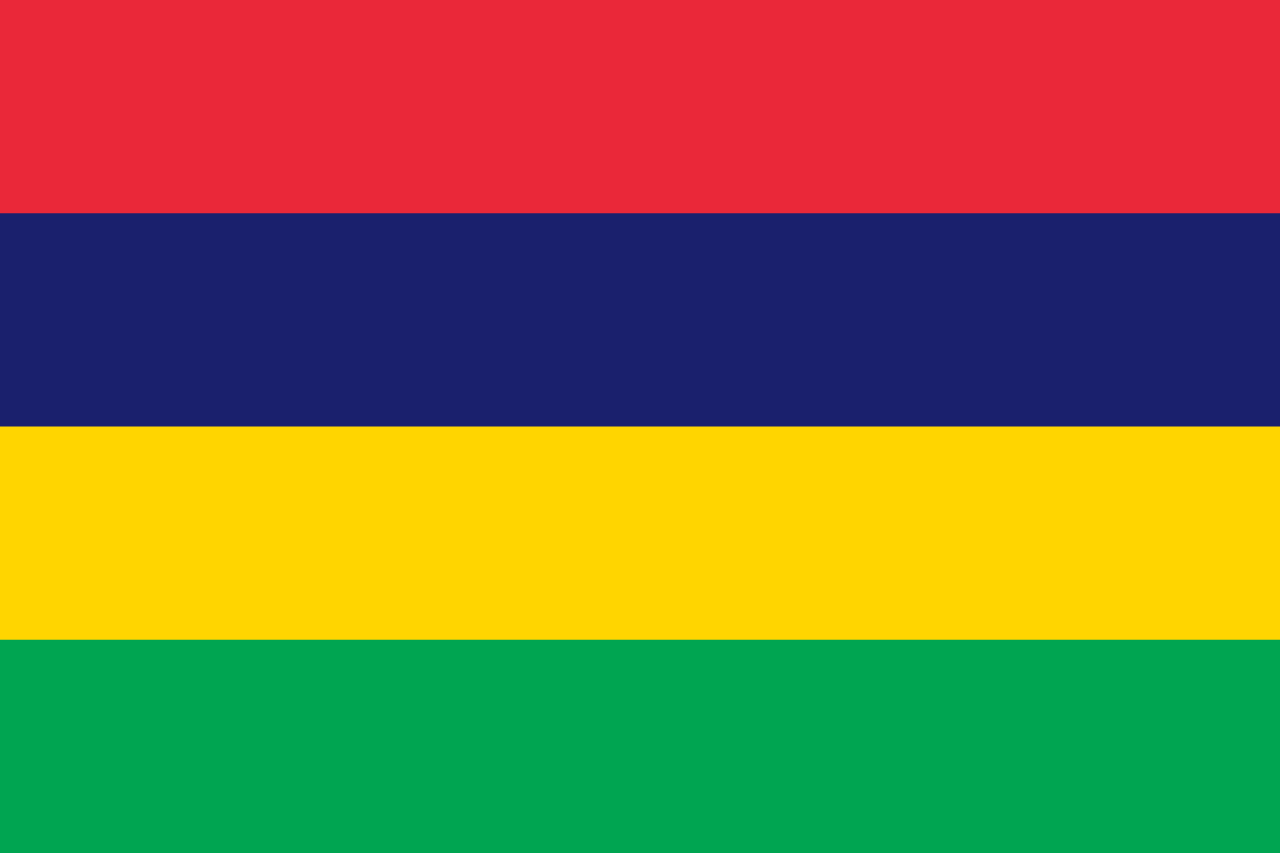
Mauritius
Africa
Four horizontal stripes of red, blue, yellow, and green representing the struggle for independence, the Indian Ocean, the bright future, and the lush vegetation of this successful island democracy.
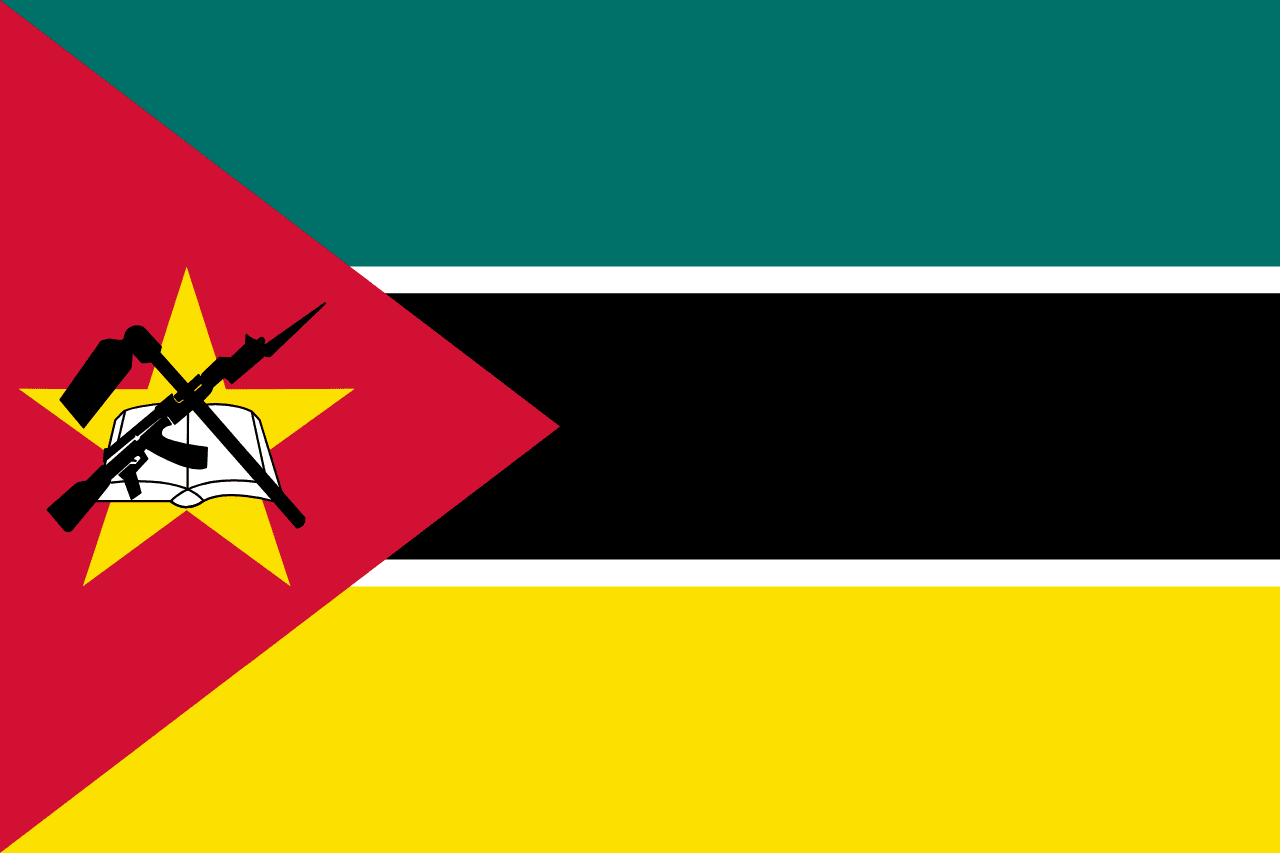
Mozambique
Africa
A horizontal tricolor of green, black, and yellow, separated by white fimbriations, with a red triangle at the hoist bearing a yellow star, a book, a hoe, and an AK-47 with bayonet. The flag uniquely features a modern weapon as a national symbol.
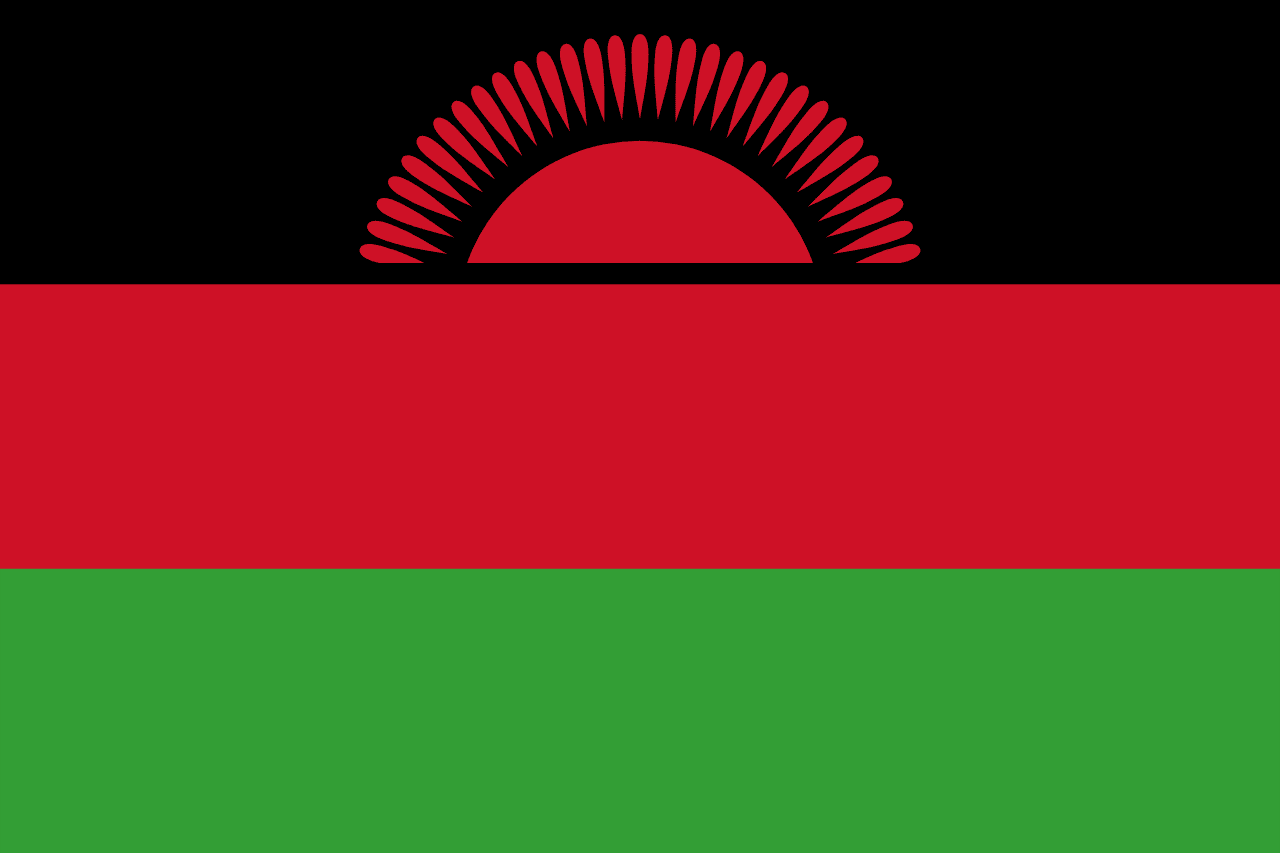
Malawi
Africa
Three horizontal stripes of black, red, and green with a red rising sun in the upper left corner, representing the African people, the blood of freedom fighters, the land's fertility, and the dawn of freedom and hope.
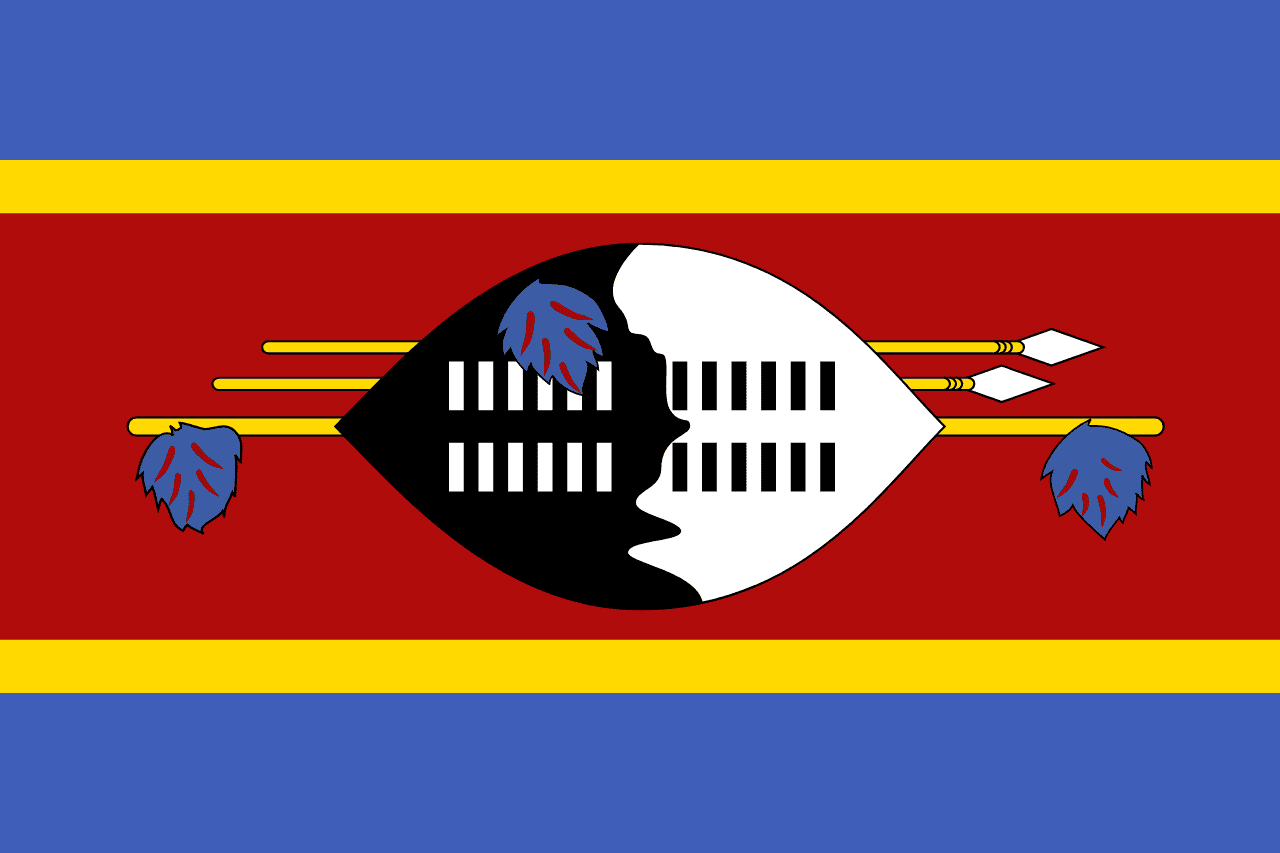
Eswatini
Africa
Five horizontal stripes of blue, yellow, red, yellow, and blue with a traditional Swazi shield and two spears overlaid on the center red stripe, representing peace, mineral wealth, past struggles, and the protection of the kingdom.
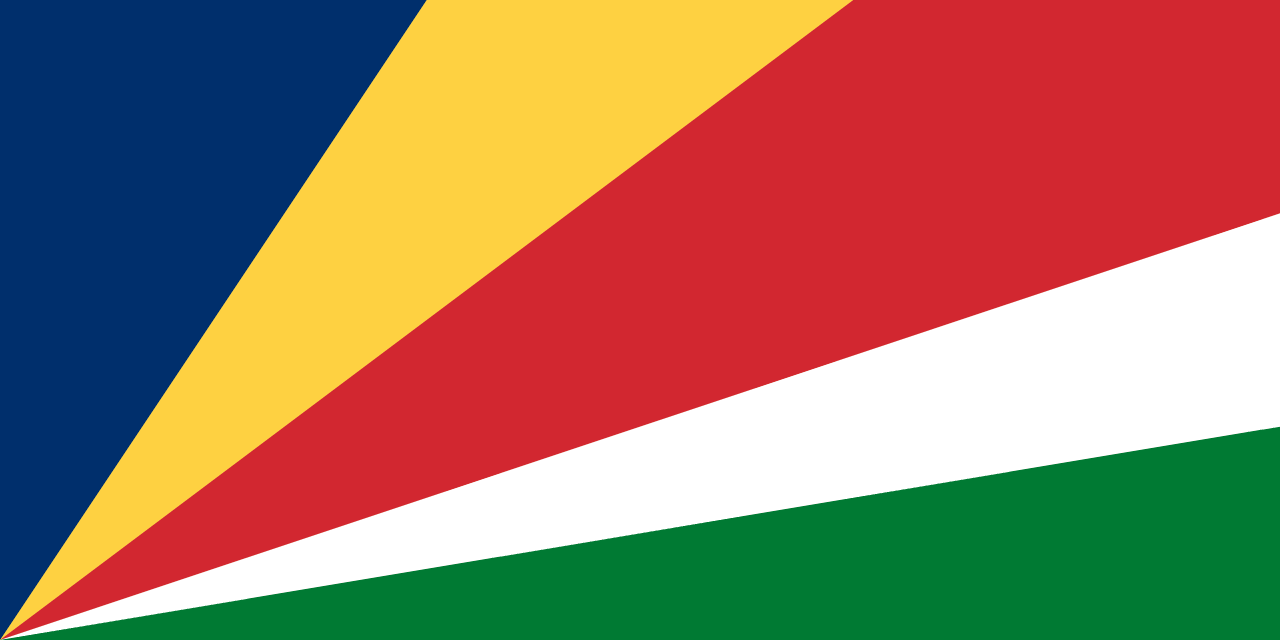
Seychelles
Africa
A flag of five oblique bands radiating from the bottom hoist corner: blue, yellow, red, white, and green. The design symbolizes a dynamic, forward-looking nation embracing unity and diversity.